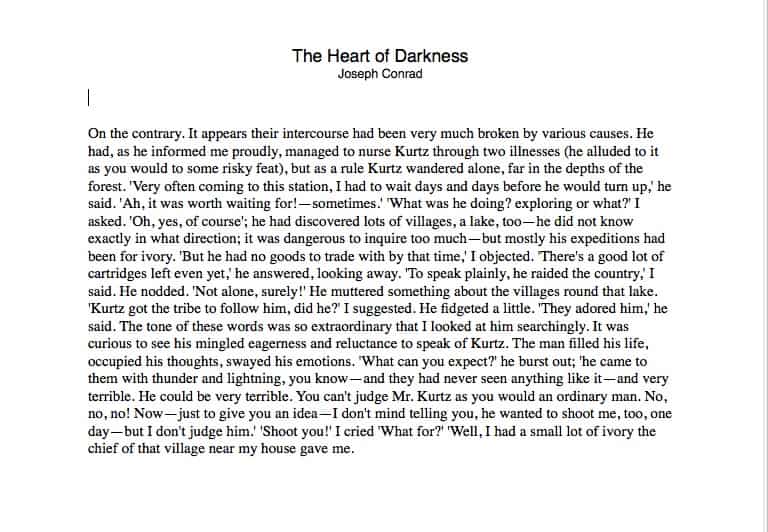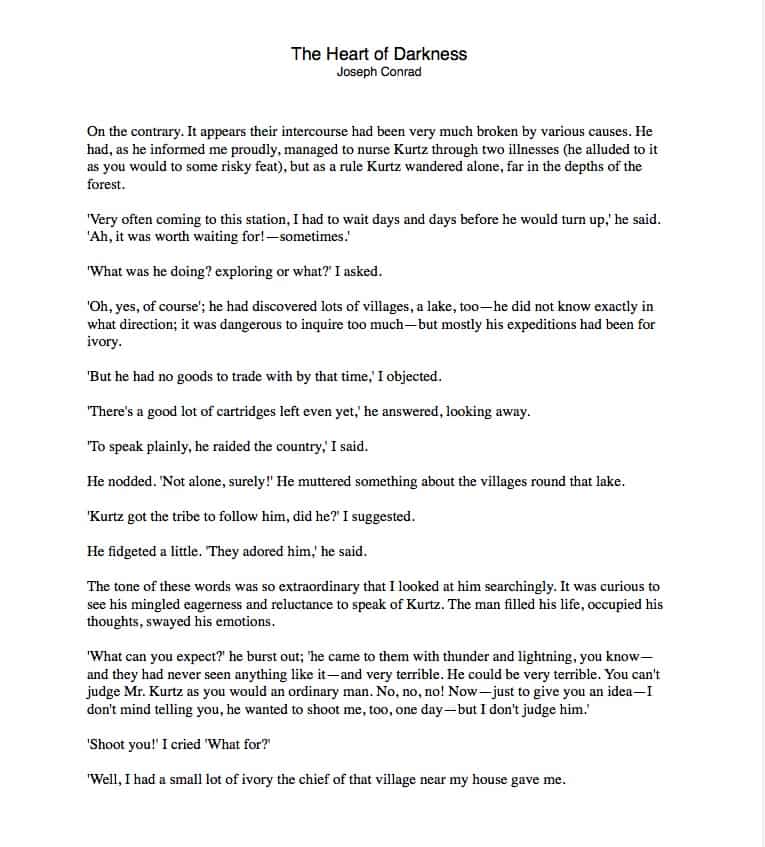by Kelly Harriger, TWJ Writer’s Workshop Presenter
INFORMATION ARCHITECTURE: Visual Structure Matters by Kelly Harriger
What’s ‘information architecture?’ It’s the overlooked idea that word arrangement plays a large role in making your writing more accessible and user-friendly to the reader.
The term emerged in the latter part of the 1990s with the rise of the internet, and the growing realization that reading words on a screen was very different from reading words on a printed page. Countless focus group studies showed that people reading on a screen were far less likely to read large blocks of text than someone reading a printed page.
There are multiple reasons for this, ranging from eye strain to content matter—after all, the Internet was there to provide quick access to information, and reading large blocks of type quickly prompted the reader to simply click away from a page and find something easier to read.
As the Internet boom continued, and content moved from computer screens to tablets and smart phones, the problem became even more glaring. Information simply needed to be condensed, shortened and edited in a manner that allowed the reader’s eye to move easily from word to word, and paragraph to paragraph, without having to backtrack and restart.
Although the term ‘information architecture’ only emerged in the past twenty years, the practice of rearranging words and breaking up blocks of type has been around since the dawn of the printed page. Editors simply know it as editing for clarity and comprehension, and making life easier for the reader.
I’ve even done it here, just to provide an example. Every paragraph I’ve written only contains two sentences.
You don’t believe me? Go back and count them.
Now ask yourself if you’d have read this far if everything I’ve written to this point was all jammed into one long paragraph. That’s why it’s important to think about how you arrange your words on a page.
In this short article, I’m going to use an excerpt from Joseph Conrad’s “The Heart of Darkness” as an example. Up until the start of the 20th century, most prose was written in a very difficult-to-read style, sometimes with multiple characters speaking within the confines of a single paragraph, and which sometimes went on for half a page or more.
It’s important to note that I have edited Conrad’s work without changing a single word, or changing one single period, apostrophe, comma or quotation. I’ve simply put some space between dialog from different characters, and opened up the paragraph to make it easier to read… nothing more.
Let’s take a look at Figure 1.

This is a single block of copy taken exactly as it was published in the first edition of the book. It’s dense and difficult to read, and nearly impossible to tell who’s talking.
Now let’s take a look at Figure 2.

It doesn’t even look like the same piece of writing, even though it contains every single word and piece of punctuation found in Figure 1. Gone is the cluttered, hard-to-follow prose style so prevalent in the 19th century, now replaced by an open, flowing, easy-to- read style that came into its own in the early part of the 20th century.
Again, I’ll stress that I haven’t changed a single word or single point of punctuation in this entire piece. I simply used the space bar and the return to make Conrad’s work easier to read. That’s ‘information architecture’ in a nutshell.
When I first began to write seriously in my late teens and early twenties, I often wrote in notebooks, and more often than not, I was writing long, desperate, angst-ridden stream- of-consciousness swill that I should have burned long ago, but didn’t. Later, when I began to take that writing and pick it apart for things I could use in more readable prose, I found myself instinctively opening up my writing, and creating more flow without really realizing what I was doing.
I realize now that I was emulating the writers that I read the most. Nearly all were 20th century writers, and when I began to read (and write) in earnest, I was reading writers whose style was fresh and unique, such as Kurt Vonnegut, Thomas McGuane and Jim Harrison. All three wrote with an open, easy-to-read style that I was naturally drawn toward.
Looking back, I realize that many of the classics I’d read in high school and college were written in a much more dense style, and I read those books simply because they were required reading. That’s not to say that I didn’t love them and cherish what I’d read, but I seldom find myself wanting to go back and reread them, because most—like The Heart of Darkness—were just written in a style that required a lot of work, and were tedious to get through because of what I realize now was poorly constructed architecture.
And if The Heart of Darkness were to be re-released in the style found in Figure 2? Honestly, I think I’d pick up a copy and read it all over again, and probably enjoy it more.
So think long and hard about how you put those words on the page. Write with your heart first, and then go back and edit with your head, thinking of the reader whose attention you want to keep focused on your words. It’s actually pretty easy, and good information architecture will make your writing jump from the page.

BIO: Kelly Harriger is a former advertising and marketing copywriter and editor who worked in Los Angeles for most of his career, and is now a contributing writer for The Watershed Journal. He has written many short stories and a few screenplays, and is currently working on his first novel. He resides in Brookville.





Good article, and thank you for publishing informative things like this.